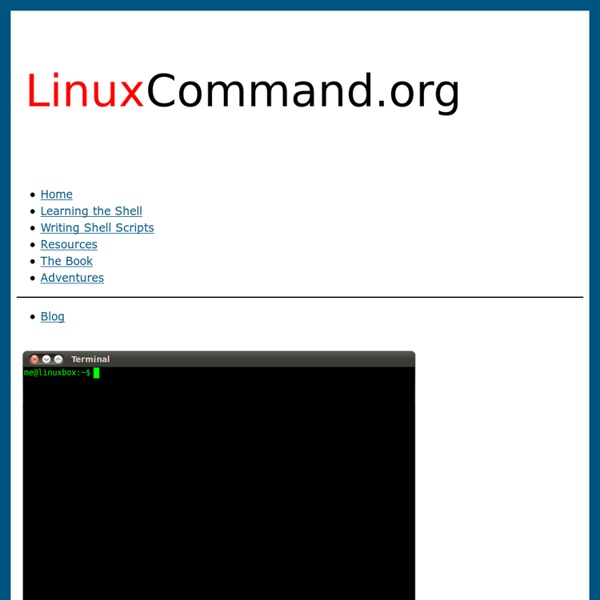



Command Line Basics After part one of the git for designers post, Kim Røen suggested in the comments doing a post with some instructions on using the command line. This is that post. We’re going to be focusing on the Mac side of things, but a lot of the concepts in here will apply to all command line programs as well. Maverick - From Also see info about the most recent LTS version, Precise Pangolin (12.04 LTS). Introduction
Learn For Free - Linux Foundation Training Free Introduction to Linux Online Course Designed for people who have limited or no previous exposure to Linux, this free edx.org online course explores the various tools and techniques commonly used by Linux programmers, system administrators and end users to achieve their day-to-day work in a Linux environment. Upon completion of this training you should have a good working knowledge of Linux, from both a graphical and command line perspective, allowing you to easily navigate through any of the three major Linux distributions. Malicious Linux Commands - From (This article was originally published in Ubuntu Forums but was removed there. Ubuntuguide feels that knowledge about these risks is more important than any misguided attempts to "protect the public" by hiding their potential dangers or protect the (K)Ubuntu/Linux image. The original article has therefore been re-created (and subsequently edited) here.) ATTENTION: It is worthwhile to have some basic awareness about malicious commands in Linux. Always be cautious when running one of these (or similar) commands (or downloaded scripts) that have been "recommended" as a solution to a problem you may have with your computer.
Bash custom shell command Super short post on creating your own custom shell command using Bash. You could do something very advanced using a general purpose or system level programming language such as Go, but most of the time a simple shell script will suffice. The downside of using a shell script is that you have to to either source it source ~/foo.sh or execute it direcly bash ~/foo.sh. The best way to work around this is to do the following: Specify a binaryWrite your script (inc. reference to any special variables)Name your script to reflect the name of the command you want to useMove the script into a location that your $PATH can accessSet the script to be executable
11 Shortcuts For Learning Linux In Record Time Linux is a fantastic choice for an operating system, but some people have tried Linux and simply aren’t comfortable with it because they know very little about it. While the best way to learn it and get more comfortable with it is to force yourself to use it, that doesn’t mean that you have to make it more difficult on yourself than necessary. If you’d like to learn Linux, but want some ways to speed up the process, here are ten shortcuts you can use to learn as fast as possible. Linux Foundation Or edX Course If you’d like to get a formal introduction to Linux, there’s no better way than to take part in the Introduction to Linux course presented by the Linux Foundation or the version provided via edX.
Learn Linux, 101: The Linux command line Overview This article gives you a brief introduction to some of the major features of the bash shell, and covers the following topics: Interacting with shells and commands using the command lineUsing valid commands and command sequencesDefining, modifying, referencing, and exporting environment variablesAccessing command history and editing facilitiesInvoking commands in the path and outside the pathUsing man (manual) pages to find out about commands This article helps you prepare for Objective 103.1 in Topic 103 of the Junior Level Administration (LPIC-1) exam 101. The objective has a weight of 4. A Command Line Crash Course Let's face it -- the command line is a bit intimidating. It's that text-only interface that Hollywood has told us hackers furiously type away on while doing their devious business and the domain of experienced programmers who can effectively communicate in binary. It's time to get over those misconceptions. The command line (Terminal on a Mac, Command Prompt on Windows) is your window into your computer and your home base for doing development work.
CommandLineResources Ubuntu Documentation CommandLineResources Command Line Learning Resources Discussion thread for this wiki can be found here. This is the list of resources for learning the GNU/Linux CLI and basic bash scripting. It originated with this thread on the Ubuntu forums.